Learn how to stop rats from inhabiting your roof
Are you hearing strange scratching noises inside your roof? Scurrying in the walls and the pitter-patter of tiny clawed feet running around in the roof, can quickly escalate from a minor annoyance to a serious problem, when rats decide to make your roof their new home.
These crafty rodents are not only hard to remove once they start breeding, but they can pose serious health risks, as well as cause significant structural damage to your home and items inside.
Sure, you can set a few traps and leave it at that – but rats will breed faster than traps can catch them. So, in order to truly remove a rat infestation from your home, a strategic approach is often required.
In this article, we will be sharing information about common Australian rats that might be living in your roof, and the most effective methods for eliminating rats from your roof, from identifying signs of infestation to implementing preventative measures. The best solution is a proactive approach to safeguarding your home, ensuring a rodent-free living space for you and your family.
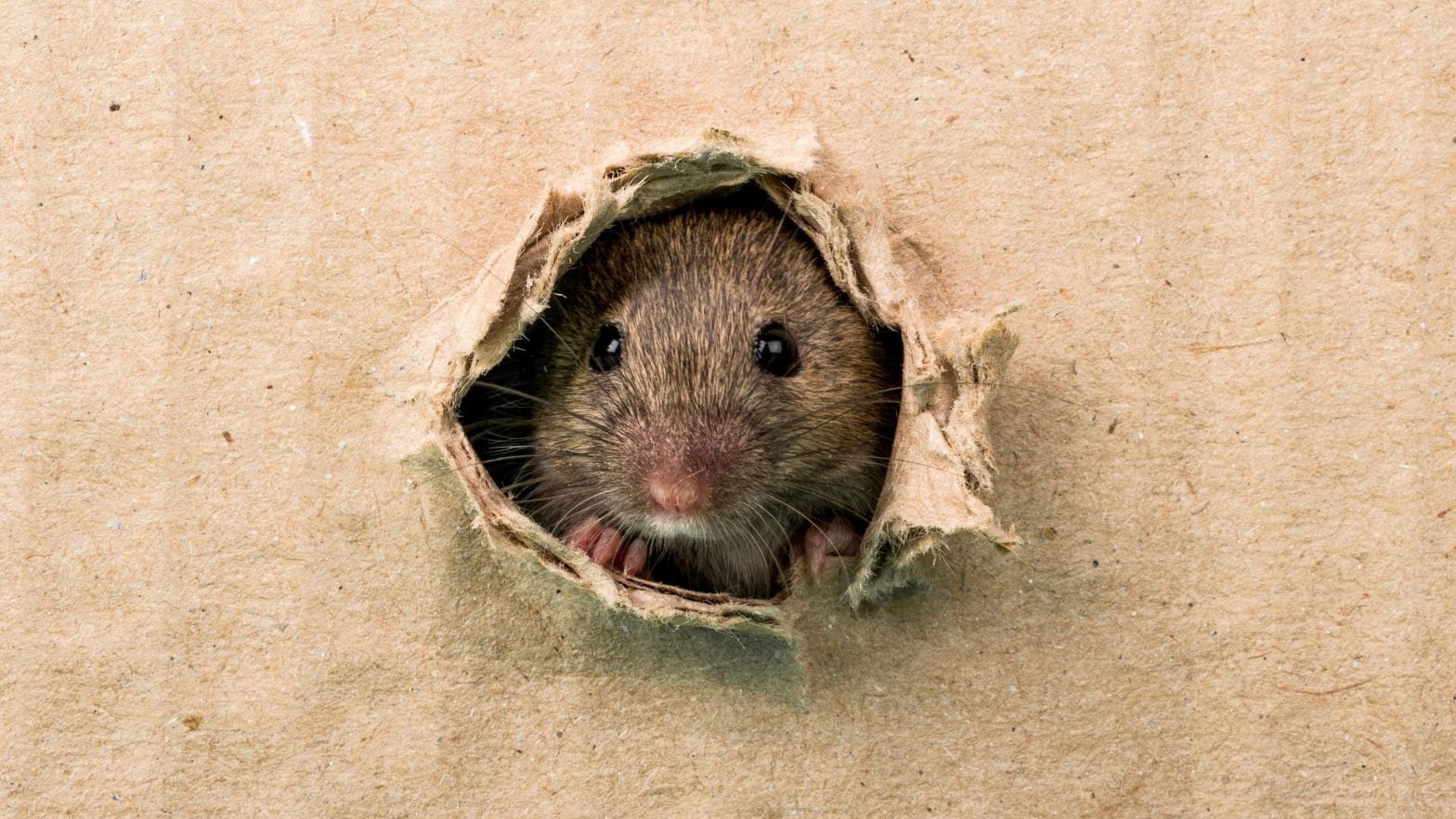

What kinds of rats are common in Australia?
Several species of rats call Australia home, and each has adapted to its unique environment. These rats include:


Black rat (Rattus rattus)
An invasive species, the black rat is one of the most common rats found in Australian houses. It is found predominantly in coastal environments but is just as happy setting up shop in urban settings, and is considered one of the world’s worst pests. The black rat will eat almost anything, breeding in warmer weather, and producing up to 5 litters per year with five to ten young in each litter.
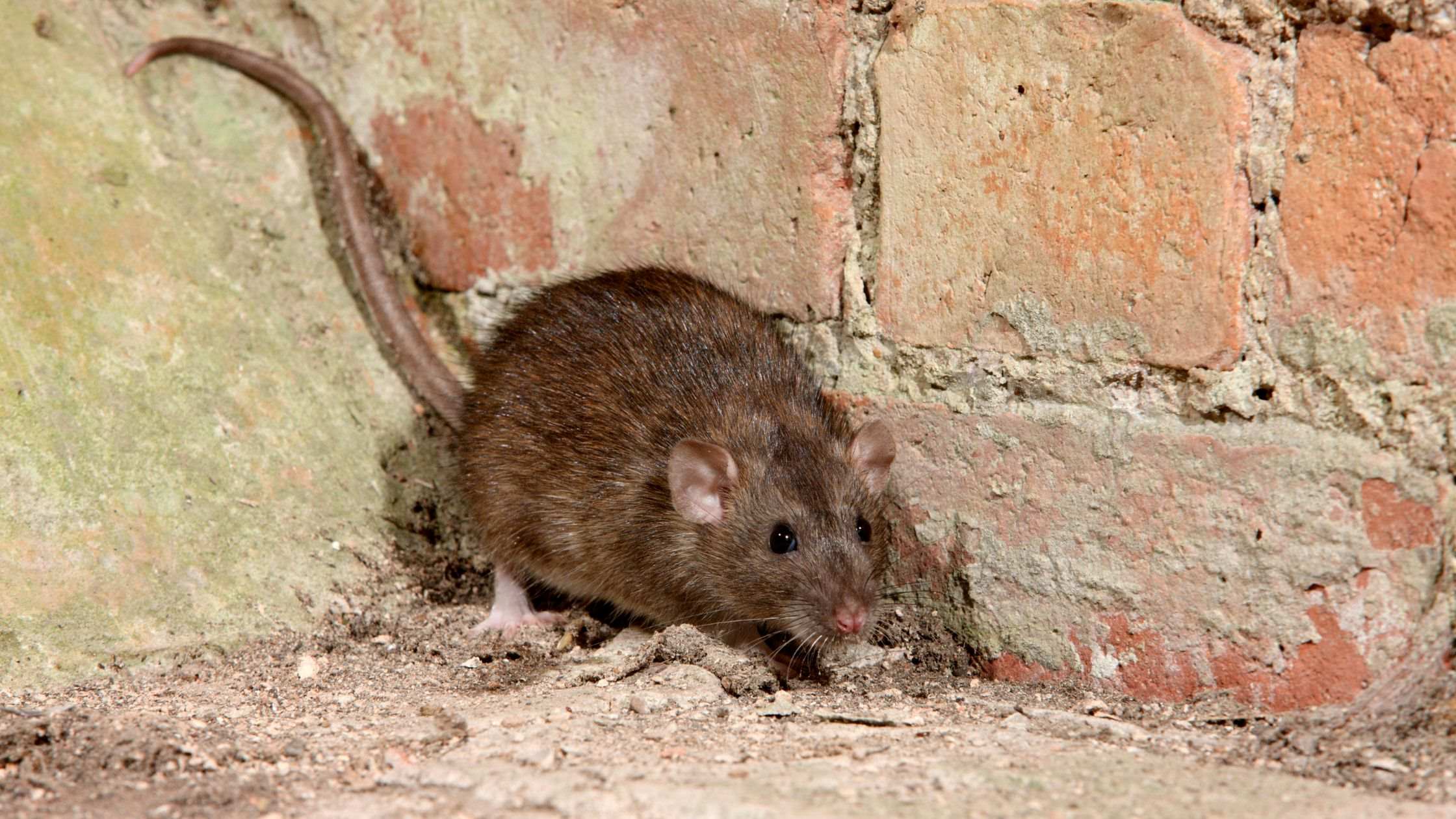

Brown rat (Rattus norvegicus)
Also known as the common rat, this little creature ranks highly as a pest worldwide. Its adaptability allows it to easily thrive in most environments, including urban settings like homes and apartment blocks. It’s also found in farmhouses. Its diet consists mostly of cereals, though it will eat pretty much anything. It is a common pest and is a likely culprit if you’re hearing scurrying in your roof and walls.
Water rat (Hydromys chrysogaster)
This rat is a distinct rodent species that is actually native to Australia. Unlike its urban-dwelling counterparts, the water rat thrives near freshwater habitats. This rat has adept swimming abilities. Often found in riverbanks and wetlands, its diet primarily consists of aquatic prey. The water rat plays a crucial role in maintaining the ecological balance in aquatic ecosystems, contributing to the diversity of Australia’s native fauna. This rat is NOT a household pest and should be left to thrive in natural settings. Be careful if you live near water systems to identify the difference between water rats, and other rats that are actual pests.
Bush rat (Rattus fuscipes)
Much like the water rat, this little rodent is another species native to Australia. It thrives in forests and bushlands and also contributes to Australia’s natural biodiversity. Unlike household pests, the bush rat plays a vital role in local ecosystems and should be left undisturbed in its natural habitat. Residents near natural settings should learn to differentiate it from potential pests. The bush rat generally won’t venture into homes, so they can be left alone if found in their natural habitat.
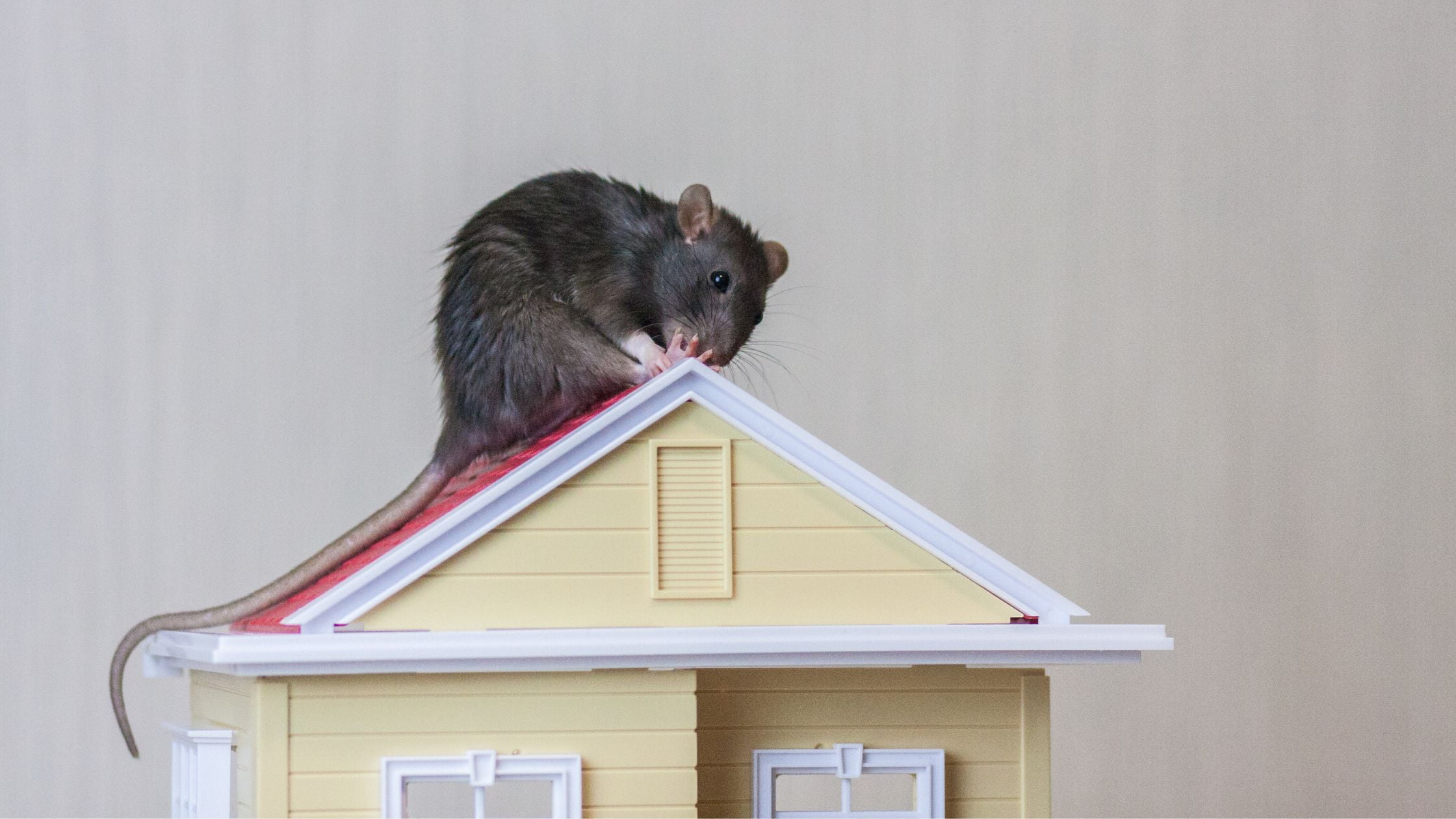

Which types of rats live in houses?
As mentioned in the section above, when it comes to Australian rats that cause havoc in homes, the brown rat and the black rat are common culprits and should be removed ASAP. Put simply, kill them at will. Native rats on the otherhand, are precious to our Australian wildlife.
What is the difference between rats and mice?
When it comes to knowing whether you’ve got rats or mice in your home, there are a few main differences you can look for:
General appearance and size
Rats are generally larger in size than mice and tend to have a more solid body, reaching lengths of around 22cm to 27cm (that’s excluding the tail!). Mice may be smaller but their tails are generally longer in comparison to body size, and their tails are usually covered in a fine layer of fur, whereas rat tails look more ‘scaly’.
Habitats and behaviours
Both rats and mice are quite adaptable and excellent climbers when it comes to habitats that they thrive in, so either could become a problem in both urban and rural environments. Mice, however, tend to be a little more curious and a little less cautious, so you’ll likely see them running around in your house, whereas rats tend to give their position away with scurrying noises in the walls, cupboards or the roof. This is one reason why dogs are often the first to discover a rat problem.


Food preferences
While rats and mice both love grains and cereals, mice also enjoy seeds, fruits and small insects. That’s not to say that mice and rats ONLY eat these things. They will definitely eat pretty much anything they can get their hands on (including food scraps).
Understanding the key differences between mice and rats can be helpful in identifying which is living in your roof and how to approach removing them and preventing them from returning.
How fast do rats multiply?
If given the chance, a rat infestation in your home can grow rapidly due to their high reproductive rate.
Female rats can reach maturity and be ready to start breeding at just 2 months old! On top of this, they can produce up to 5-10 litters per year, with each litter containing 6-12 babies. That’s a LOT of rats.
This is why it is so important to remove rats from your house immediately after finding them. Rat-proofing your home is possible!
What are signs that you’ve got rats in your roof?
Aside from the obvious sign of actually spotting them running around in your home, there are quite a few things you can look out for to tell if a colony of rats is living in your roof.


Gnawing damage
Keep an eye out for unexplained gnawing damage in your home and/or roof. Targeted items are generally wiring, insulation, and structural components of the house. Rats leave distinctive chew marks that become obvious quite quickly as they need to chew to keep their teeth healthy.
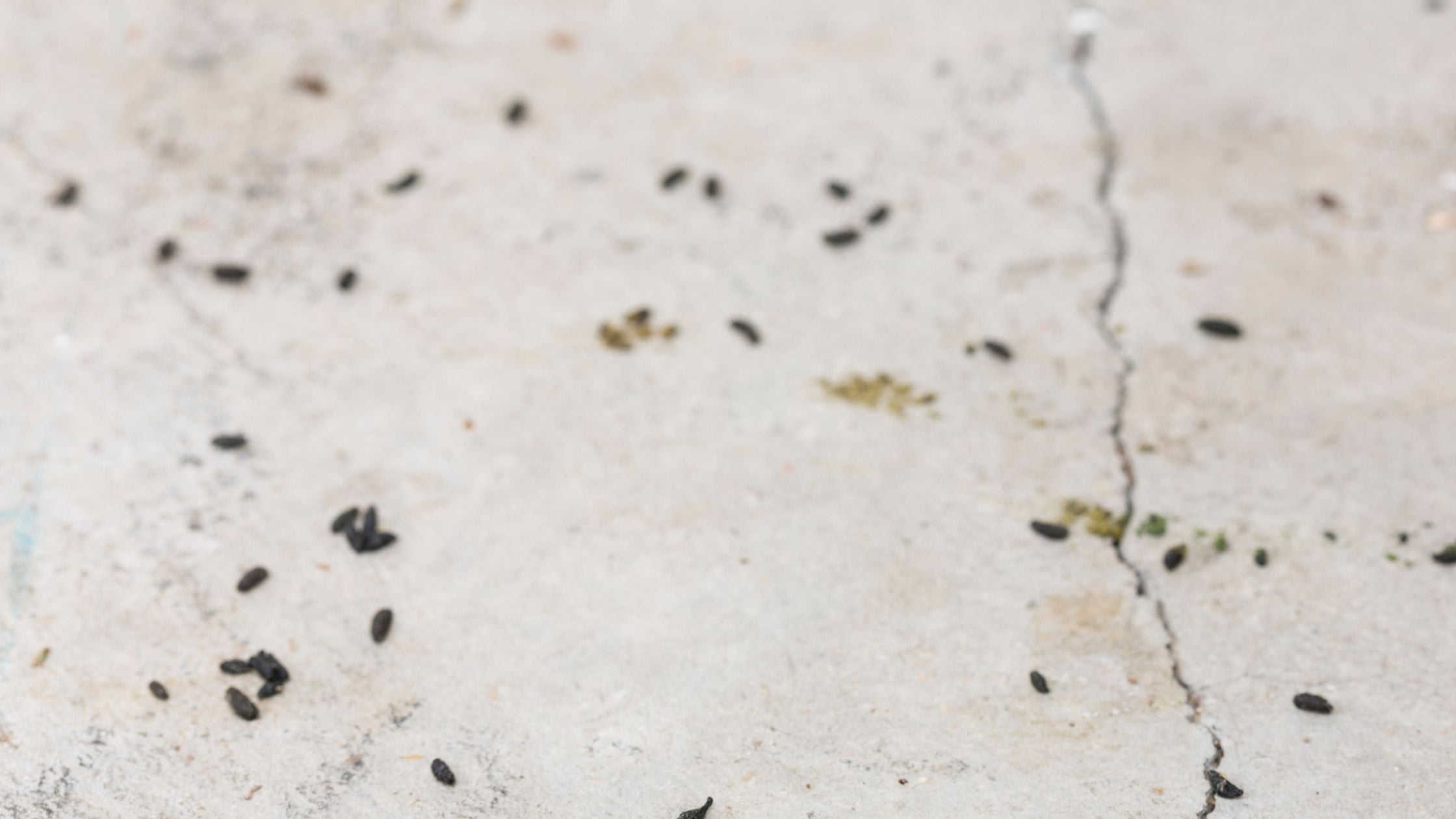

Rat droppings
Small pellet-like droppings are a key sign that you’ve got some kind of rodent living in your home. Mice droppings look similar but are smaller than rat droppings. Cleaning up droppings and clearing out infestations quickly is crucial to avoiding health risks associated with rat droppings contaminating household areas.


Scurrying and scratching noises
You’ll need to listen very closely but during quiet hours like late at night or early morning, you may hear telltale scurrying noises of rats living in your home. Rats are nocturnal so you’re definitely more likely to hear them once the sun goes down.
Bad smells
Rats mark their territory by…you guessed it; peeing wherever they feel at home. This odour can often become noticeable, especially if you venture into confined spaces like the roof or attic where rats generally make their nests.
Dogs barking randomly
If your dog is barking randomly at odd hours and for long periods, you might think your house is haunted…but it might be rats in your roof and walls. Rats communicate using higher frequency sounds that dogs can hear, making them great indicators of the presence of rats.
Strange marks and smudges around the house
Rats have super greasy fur, so their movements tend to leave behind dark smudges and markings where they travel frequently. This could be on the corners of doorways, windowsills, or along walls close to the floor.
If you notice any of these signs in your home, it’s definitely time to investigate for rats and deal with the problem ASAP.
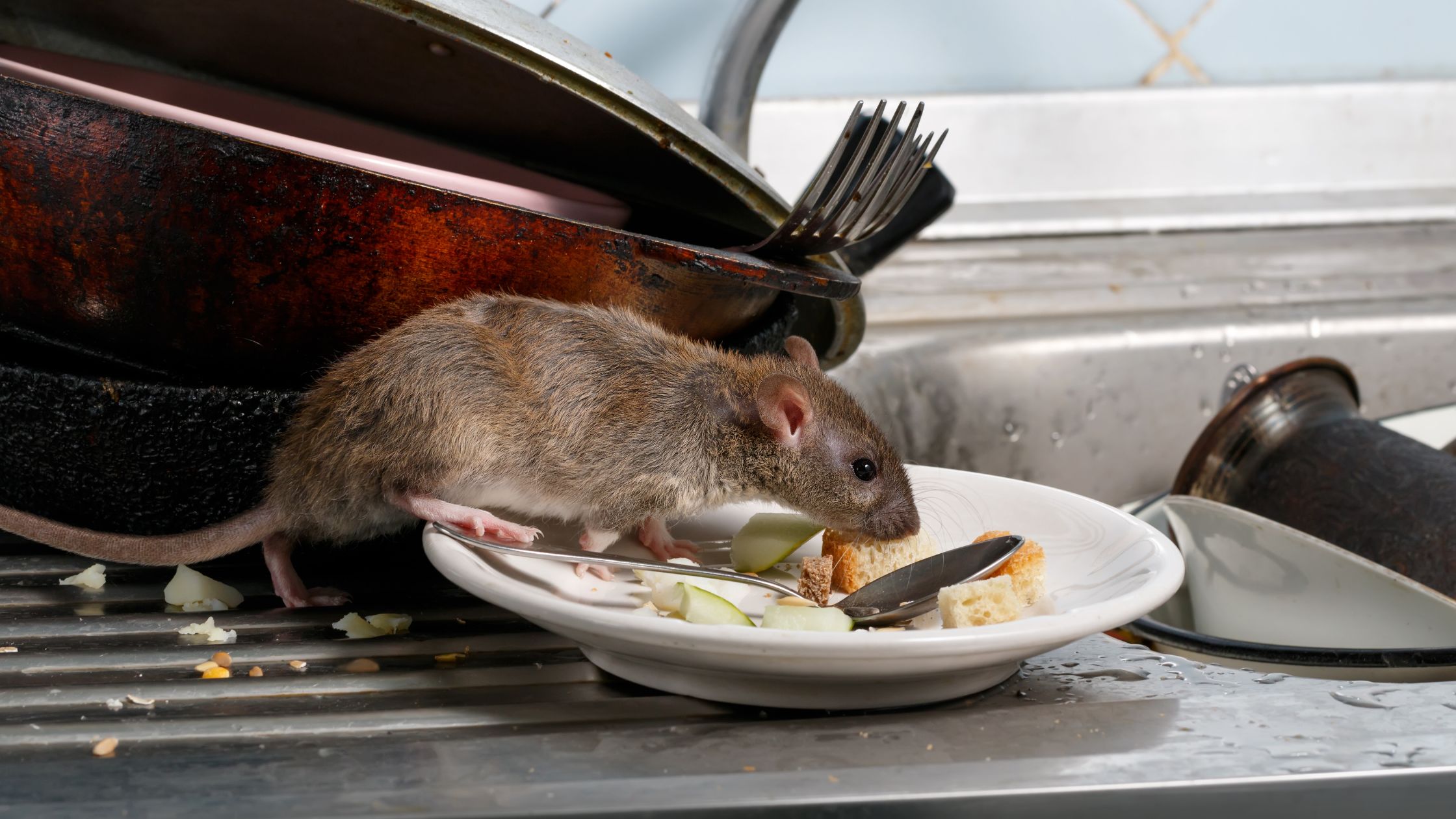

What kind of damage can rats do to your home?
Rats can cause significant damage in more ways than one. Here are just a few examples of how rats can cause havoc within your home.
Structural and foundational damage
Not only can rats cause structural damage by gnawing on wooden beams, wiring, insulation, and other important materials, but they can also undermine the foundations of a home if they burrow into the ground underneath. They are collectors and nest-builders, using anything from paper, clothing material, and even insulation to build their homes. From fire risks to long-term structural damage, and issues with the overall safety and stability of a house, rats may be small, but they can certainly cause big damage if left unchecked.
A bad smell that’s hard to remove
As mentioned above, rats will mark their territory with urine, and they also poop everywhere. When they die, their carcasses will likely be left to rot in your home. The combination of these smells can lead to a stench that just won’t quit, throughout the entire home. It can take a lot of time, money, and effort to remove such a smell from a home and it can even reduce the home’s value. Ever walked into a house inspection and suddenly been turned off by bad smells alone?
Damaged possessions
Not only can rats damage the home itself, but they’re also notorious for chewing on items like clothing, cords, furniture and other personal belongings. At the Grayson’s Gutter Guard storage office, we have actually experienced gnawing damage to numerous rolls of our Triple-G gutter guard that was in storage.
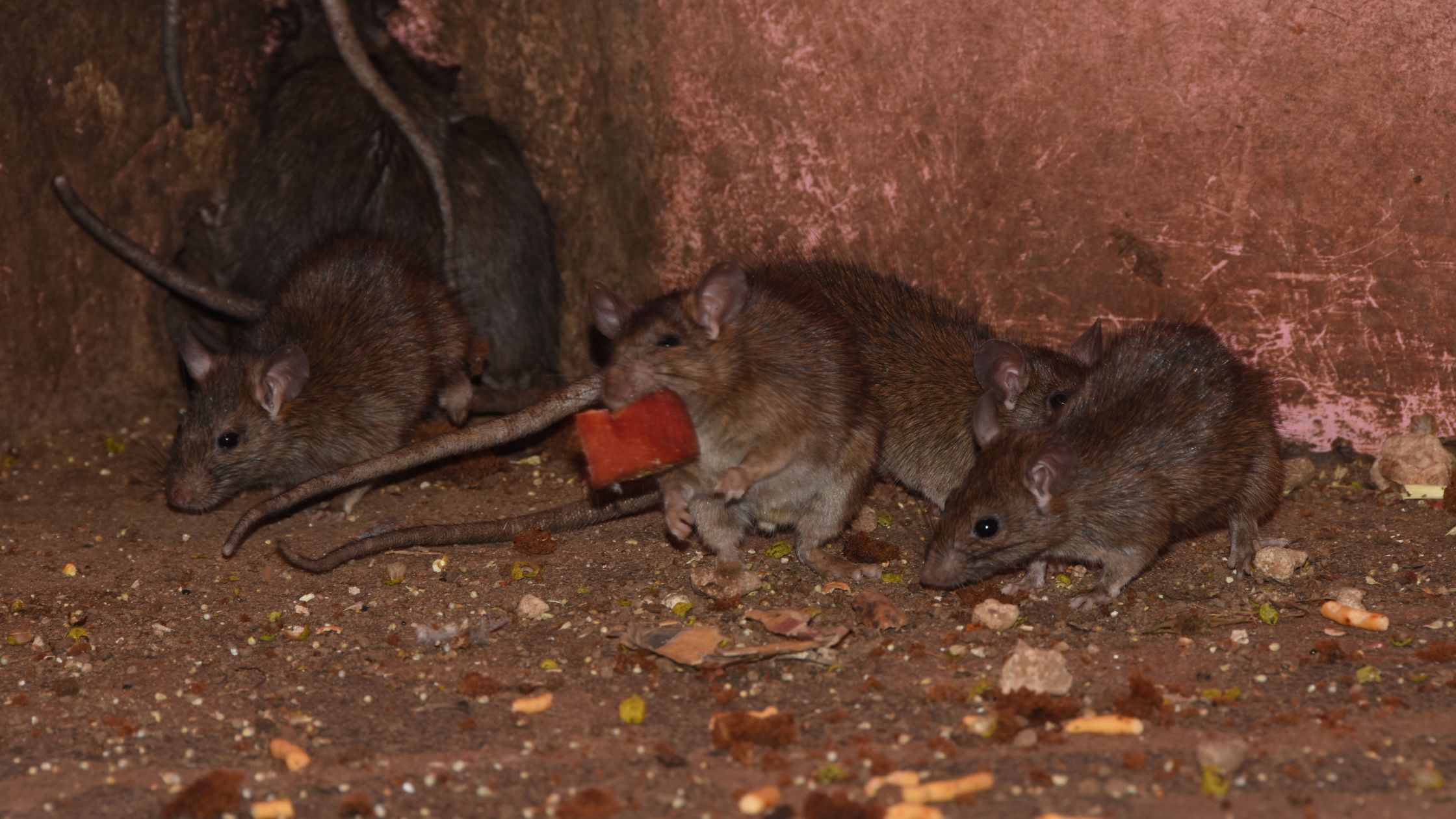

Food contamination, diseases and health risks
Rats can pose serious threats to the people and pets in your home as well. The presence of rats can lead to the spread of diseases such as leptospirosis, hantavirus, and salmonellosis, through fur, droppings and other sources. They can also cause allergies to flare up in people who suffer from them. When rats raid food supplies, their feeding habits can contaminate stored food with droppings and urine, posing a serious health risk to anyone consuming the contaminated items.
Outdoor damage
Rats are not only confined to indoor spaces; they can travel throughout the property (and neighbouring properties) into gardens and outdoor areas. They’ve been known to burrow in lawns, damage plants, and eat fruits and vegetables from the vine.
How to get rid of rats in the roof
Getting rid of rats in your roof is a step-by-step process with a few different options to consider.
First, let’s go over a few ideas for rat removal. Then, we’ll move on to preventative measures you can take to stop them returning. It’s important to note that some rat removal methods are more humane than others, so you should choose a method that works best for you.
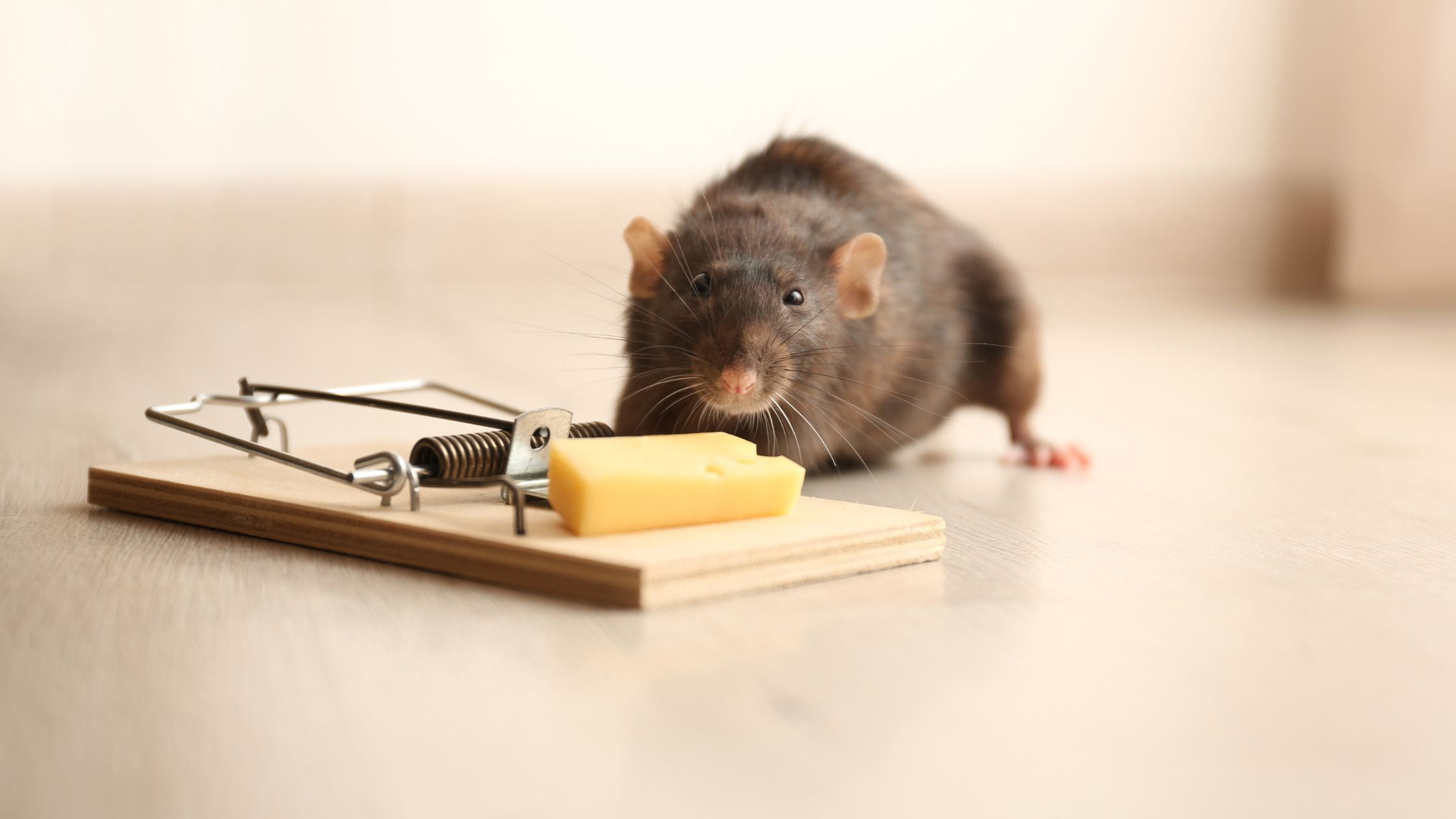

Use rat traps
There are different types of rat traps to choose from including snap traps (traps and kills the rat) and live traps (traps the rat but keeps it alive). If these are set up in strategic locations throughout the roof and home, you can often eradicate or relocate the rats in your home over time.
Set up rat bait
Bait stations can also be placed in areas that rats frequent, however, these are usually poisonous and can pose risks to pets and children if accidentally ingested.


Try a natural repellent
Some people swear by natural repellents like rags soaked in peppermint oil (or even ammonia) to deter rats, as they are thought to be unpleasant to rodents and may convince them to move to a new location.
Ultrasonics
There are ultrasonic devices on the market that make sounds that can be unpleasant to rats, but generally can’t be heard by human ears. You can try installing these devices in the roof to deter rats if you’re not a fan of using chemicals or traps.
Call in the pros
If you’ve tried removing the rats yourself but can’t quite seem to get rid of the infestation, consider hiring professional pest control services. Pest control experts can assess the extent of the infestation, employ effective eradication methods, and provide recommendations for long-term prevention.
Speaking of long-term prevention, here are a few of our best tips to help stop rats returning once they’re gone.
Find entry points and seal them
Thoroughly inspect the roof and identify potential entry points. Seal any gaps, cracks, or openings that rats could use to access the roof space with a barrier made of steel or another strong material. Common entry points can include vents, gaps in the eaves, and openings around pipes.


Trim branches that hang over or near the roof
Cut back overhanging branches from nearby trees. Why? These can be used as pathways and bridges for rats to access the roof. Cutting off any possible entry routes is a great way to help reduce the risk of rats returning to your home. Rats are remarkable climbers.


Store food securely and take rubbish out regularly
Rats love scraps and trash and any stored food they can get their hands on. By storing food (especially cereals and grains) in airtight, sturdy containers, cleaning up spills and leftover food quickly, and securing and removing garbage bins regularly, you can help discourage rats from being attracted to your property.
Keep the house and roof clean and tidy
Out of sight, out of mind, right? In this case, not so much. If your roof or attic is left to fall into disrepair and disarray, you’re opening yourself up for a rodent infestation – rats love a good mess. The same goes for the house in general.


Can gutter guards stop rats getting into your roof?
Considering the intense chewing capabilities of rats, we generally only recommend our Steel Ember Guard mesh for total rat protection. That being said, we do also need to caution that rat’s teeth basically never stop growing (weird, right?). This means they actually have to keep chewing to survive. For example, if a rat was trapped inside a gutter, it may attempt to chew through the stainless steel gutter mesh to escape.
What we can 100% confirm is that plastic mesh is NOT the way to go. Rats will easily gnaw through this. It’s not even worth trying. See our photo above with our Triple-G mesh gnawed by rats.
So, what do we know from all of this information? Rats can cause serious issues when they’re living in the roof of a home and it is super important, not just to remove them, but to take preventative measures to stop them from returning.
If you’re interested in learning more about our Ember Guard gutter guard to help stop rats from getting into your roof and home, reach out today!
Call 1800 GUTTER (1800488837)